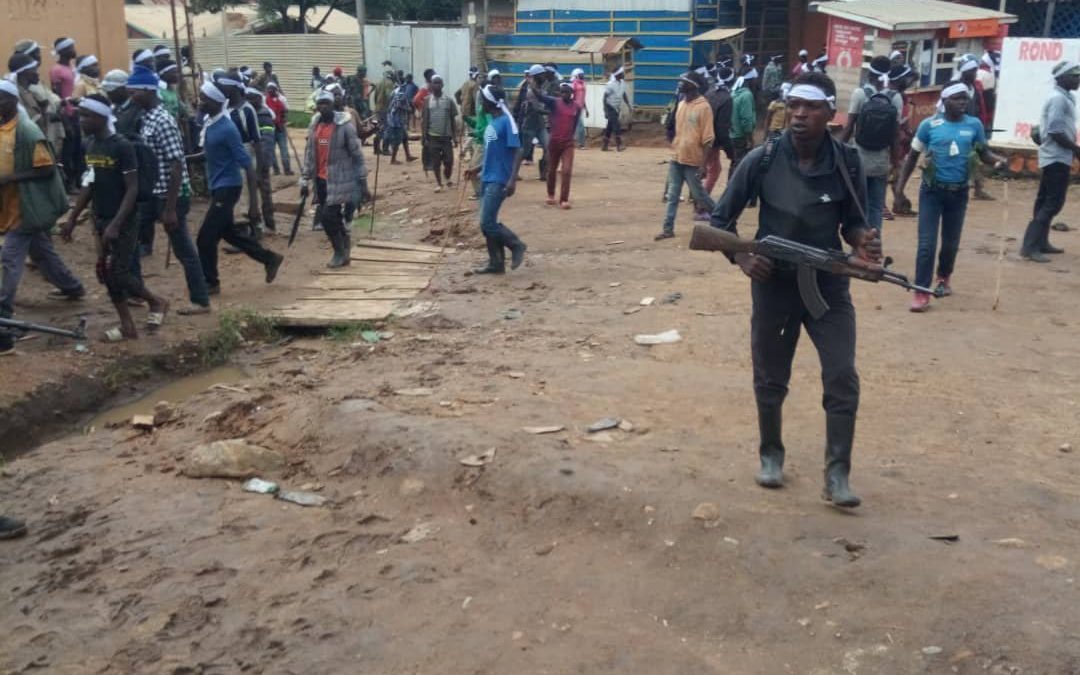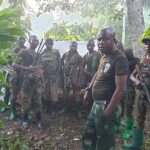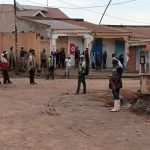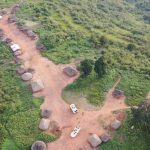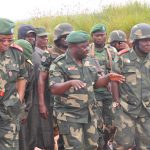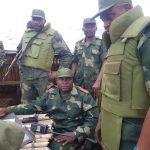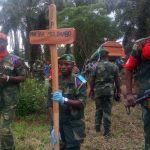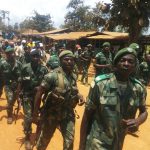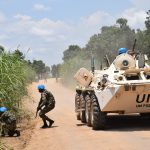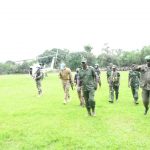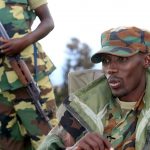On Friday July 4, 2020, at 1 a.m., a terrible fear seized the population of Bunia when columns of the CODECO militia (an ethnic militia in particular, the Lendu ethnic group), infamous because of its numerous acts of violence and acts of indescribable barbarism on poor populations whose only fault is to belong to a hated ethnic group, the Hema ethnic group, had burst into the outlying districts of Bunia, the capital of the Province of Ituri, before heading to the central prison in the city of Bunia. Before these columns reached the Bunia prison, the troops of the national army and the National Police stopped them and long talks between their commanders and the political and military authorities of the Province were initiated.![]()
While these negotiations continued, the columns of the militias, made up of young boys of indefinable age, a large number likely to be considered as minors, Kept the few curious courageous Populace who had risked to approach them. with martial songs and clumsy dance steps.
The negotiations would last several hours before the columns could withdraw, not on foot, as they had come, but transported by Congolese Armed Forces vehicles called in as reinforcements. They would be driven to Nzekere, a new suburb of Bunia, in the south-east of the city. This is to say that these columns were not far away and that fear had not yet left the guts of the inhabitants of the city of Bunia.
What did the politico-military authorities of the Province and the militia leaders say to each other during the long negotiations which resulted in the withdrawal of these columns, who did not hide their intention to go and release their companions imprisoned in the central prison of Bunia; why were they headed there?
The spokesperson for the provincial authorities was stingy with words, confined himself to congratulating himself on his having had a happy ending to this dangerous situation without bloodshed.
But the militia leaders did not refrain from speaking and it is from their mouths that the population of Bunia would learn what they have transmitted to us. To know :![]()
-To convince the militia to leave the area, the authorities disbursed forty thousand dollars given to the militiamen. Several bags of rice and beans had been seen being loaded into the military trucks that drove them back.
-The militiamen insisted on the fact that the government had to keep its word given through the channel of the delegation responsible for negotiating with them to put an end to its insurrection in particular, to implement the specifications presented by the CODECO militia in which we can find, among other things, support for militiamen before the DDR process and the release of militia prisoners as well as amnesty.
The inhabitants of Bunia interviewed did not hesitate to make some interesting observations on this militia phenomenon in Ituri.
For them, the Ituri authorities have so far not released the CODECO prisoners who are in the central prison of Bunia. This increases their apprehension because the militia who are not far have promised to return, this time, weapons in hand, if theirs were not released.
The government does not seem to have learned any lessons from its long negotiations with another Ituri militia, the FRPI, which had twice or three used the same blackmail ploy by investing in populated towns of the Collectivité des Walendu-Bindi. without killing when the negotiations stalled. The militia leaders fired them. The only difference between FRPI and CODECO is that FRPI never dared to risk in the city of Bunia but CODECO did. Apparently, the militiamen are gaining in courage.
The number of militias has increased significantly. Which means that it is a lucrative activity for the idle Lendu youth. The CODECO militia appears to continue recruiting.
The high command of the National Armed Forces has not so far found a credible and effective strategy to fight against the militia phenomenon in Ituri, but it still seems to be taken aback by the initiatives of the militias whose atypical tactics in terms of military offsets our military thinking heads.
A microphone extended to this population reveals the astonishment of the people that for the government, this incursion passes for a news item that was not discussed in the Council of Ministers and therefore tends to neglect. They haven’t sanctioned the provincial leaders of the ANR and SARM, who should be dismissed for incompetence, in order to put pressure on their successors who will no longer be surprised by similar incursions into a provincial capital. A sanction must also be reserved for the generals who work in Bunia (four from the police and four from the FARDC). In their actions against the militias, the population says they do not feel the same audacity and the same aggressiveness that troops whose leaders are there in Bunia should have. Finally, the population begs the President of the Republic to regularly audit the Army’s supply services in the Province, because this insurrection seems to feed not the soldiers but a few individuals who, therefore, undermine all efforts to put an end to the conflict.

